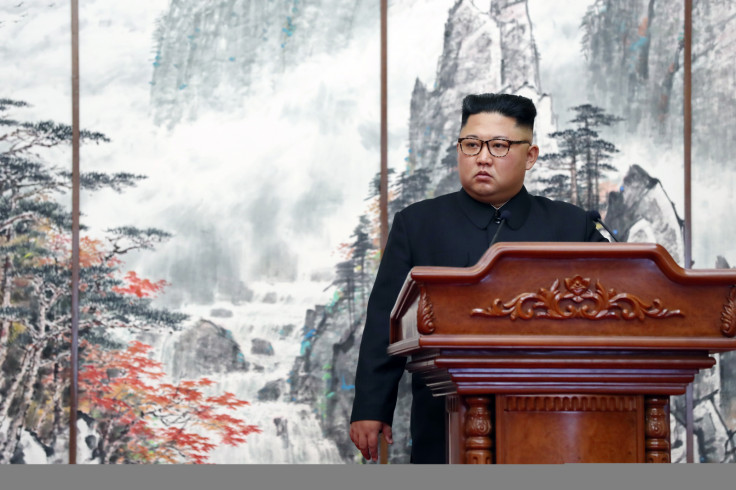North Korea weapons test: How many nukes does Kim Jong Un have?
The test announced Thursday was the first public weapons test by North Korea since President Donald Trump's historic meeting with Kim Jong Un in Singapore last year.
North Korea tested a new type of tactical guided weapon Wednesday, state media Korean Central News Agency (KCNA) said early Thursday, adding the country's leader Kim Jong Un inspected and directed the test firing. This marked the first public weapons test by the reclusive nation since President Donald Trump's historic meeting with Kim in Singapore last year.
The report touted the weapon's "peculiar mode of guiding flight" and its ability to carry a "powerful warhead," saying those capabilities "were perfectly verified at the test-fire conducted in various modes of firing at different targets." It was not immediately known what type of weapon was tested, nor its potential range. But there was no evidence the test involved a nuclear detonation or an intercontinental ballistic missile.
Kim praised the weapon's capabilities after the test firing, the state-run agency reported.
"The development and completion of this weapons system will be a great historic event in strengthening the combat capability of the People's Army," he said, according to KCNA. "I was often completely moved in admiration at the time of strategic weapons development but seeing this it seems our scientists, engineers and the labor class is truly great. If they are willing then no weapon is beyond creation."
Officials from the U.S. Department of Defense said late Wednesday that no missile launch was detected by the U.S. Northern Command and Strategic Command.
The test comes less than two months after the collapse of denuclearization talks between Trump and Kim in Vietnam. In the wake of the failed talks, Kim said he was open to a third summit with Trump, and gave the U.S. until the end of the year to come up with concrete proposals that would lift sanctions on the North.

On Tuesday, the Center for Strategic and International Studies, a Washington, D.C.-based think tank, said satellite imagery showed five railcars near North Korea's uranium enrichment facility and radiochemistry laboratory, suggesting Pyongyang may be reprocessing radioactive material into bomb fuel. The activities took place at Yongbyon nuclear site on April 12.
"In the past these specialized railcars appear to have been associated with the movement of radioactive material or reprocessing campaigns," the monitor said. "The current activity, along with their configurations, does not rule out their possible involvement in such activity, either before or after a reprocessing campaign."
North Korea spent most of Trump's first year in office putting its nuclear arsenal in order. Since 2011, the North Korean leader's regime fired more than 85 missiles and conducted four nuclear weapons tests. While the exact number of nukes North Korea has remains unclear, a top South Korean official said late last year that it is estimated to be up to 60 warheads.
Unification Minister Cho Myoung-gyon said in October that the estimates on the size of North Korea's nuclear arsenal range from 20 bombs to as many as 60.
North Korea has not test-fired a ballistic missile since November 2017, when it tested its Hwasong-15 intercontinental ballistic missile, which some experts believe is capable of reaching the U.S. In September 2017, Pyongyang carried out its sixth test of a nuclear weapon, causing a 6.3-magnitude seismic event, as measured by the United States Geological Survey.
In September 2016, Siegfried Hecker of Johns Hopkins University in Washington, D.C., estimated that North Korea produced enough highly enriched uranium to make six additional nuclear bombs a year.
This article originally appeared in IBTimes US.
This article is copyrighted by International Business Times, the business news leader





















